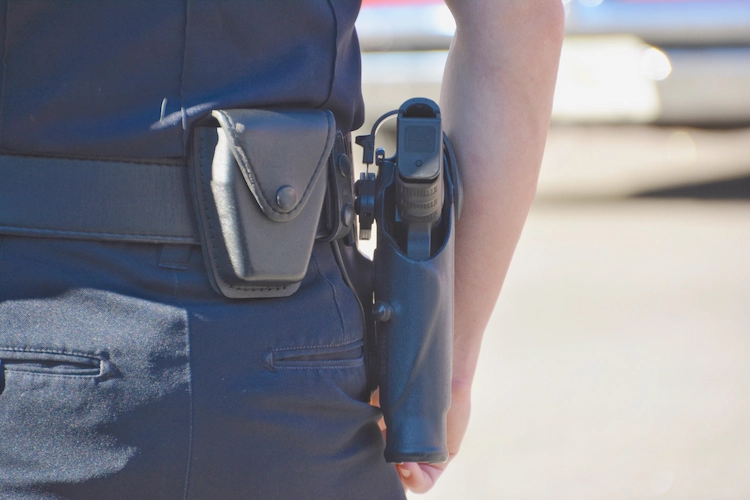SCOTUS Clarifies Bruen in Upholding Federal Gun Law

In United States v. Rahimi, 602 U.S. ____ (2024), the U.S. Supreme Court upheld a federal law that prohibits individuals subject to a domestic violence restraining order from possessing a gun. According to the Court, when an individual has been found by a court to pose a credible threat to the physical safety of another, that individual may be temporarily disarmed consistent with the Second Amendment.
Facts of the Case
Zackey Rahimi was indicted under 18 U.S.C. §922(g)(8), a federal statute that prohibits individuals subject to a domestic violence restraining order from possessing a firearm. A prosecution under Section 922(g)(8) may proceed only if the restraining order meets certain statutory criteria. In particular, the order must either contain a finding that the defendant “represents a credible threat to the physical safety” of his intimate partner or his or his partner’s child, §922(g)(8)(C)(i), or “by its terms explicitly prohibit[ ] the use,” attempted use, or threatened use of “physical force” against those individuals, §922(g)(8)(C)(ii).
Rahimi conceded that the restraining order against him satisfies the statutory criteria, but argued that on its face Section 922(g)(8) violates the Second Amendment. The District Court denied Rahimi’s motion to dismiss the indictment on Second Amendment grounds. While Rahimi’s case was on appeal, the Supreme Court decided New York State Rifle & Pistol Assn., Inc. v. Bruen, 597 U.S. 1 (2022). In Bruen, the Court explained that when a firearm regulation is challenged under the Second Amendment, the Government must show that the restriction “is consistent with the Nation’s historical tradition of firearm regulation.”
In light of Bruen, the Fifth Circuit Court of Appeals reversed. It held that the Government had not shown that Section 922(g)(8) “fits within our Nation’s historical tradition of firearm regulation.”
Supreme Court’s Decision
The Supreme Court reversed by a vote of 8-1. It held that when an individual has been found by a court to pose a credible threat to the physical safety of another, that individual may be temporarily disarmed consistent with the Second Amendment
“When a restraining order contains a finding that an individual poses a credible threat to the physical safety of an intimate partner, that individual may—consistent with the Second Amendment—be banned from possessing firearms while the order is in effect,” Chief Justice John Roberts wrote on behalf of the Court. “Since the founding, our Nation’s firearm laws have included provisions preventing individuals who threaten physical harm to others from misusing firearms.”
In reaching its decision, the Supreme Court noted that “some courts have misunderstood the methodology of our recent Second Amendment cases,” suggesting that they have been too rigid in applying Bruen. As Chief Justice Roberts explained, the reach of the Second Amendment is not limited only to those arms that were in existence at the founding. “By that same logic, the Second Amendment permits more than just those regulations identical to ones that could be found in 1791,” Roberts wrote. “Holding otherwise would be as mistaken as applying the protections of the right only to muskets and sabers.”
According to the Court, the proper question for lower courts to ask is “whether the new law is ‘relevantly similar’ to laws that our tradition is understood to permit, applying faithfully the balance struck by the founding generation to modern circumstances.” As the Chief Justice explained in the following example, “if laws at the founding regulated firearm use to address particular problems, that will be a strong indicator that contemporary laws imposing similar restrictions for similar reasons fall within a permissible category of regulations.”
In this case, the Court concluded that Section 922(g)(8) survived Rahimi’s challenge. In support, Roberts cited two sets of laws dating back to the 1800s — suretylaws that authorized courts to require individuals who were believed to be a threat to post a bond, and “going armed” laws that punished individuals who had threatened others with guns.
Like the surety and going armed laws, Section 922(g)(8)(C)(i) applies to individuals found by a court to threaten the physical safety of another. According to the Court, this prohibition is “relevantly similar” to those founding era regimes in both why and how it burdens the Second Amendment right. The Court further found that Section 922(g)(8) restricts gun use to check demonstrated threats of physical violence, just as the surety and going armed laws do. “Together, the surety and going armed laws confirm what common sense suggests: When an individual poses a clear threat of physical violence to another, the threatening individual may be disarmed,” Chief Justice Roberts wrote.
Previous Articles
Supreme Court Rejects Mexico’s Suit Against U.S. Gun Manufacturers
by DONALD SCARINCI on July 8, 2025
In Smith & Wesson Brands v. Estados Unidos Mexicanos, 605 U.S. ____ (2025), the U.S. Supreme Co...
SCOTUS Sides With Employee in Reverse Discrimination Case
by DONALD SCARINCI on July 2, 2025
In Ames v. Ohio Department of Youth Services, 605 U.S. ____ (2025), the U.S. Supreme Court held tha...
Supreme Court Rejects Moment of Threat Doctrine in Deadly Force Case
by DONALD SCARINCI on June 30, 2025
In Barnes v. Felix, 605 U.S. ____ (2025), the U.S. Supreme Court rejected the Fifth Circuit Court o...
The Amendments
-
Amendment1
- Establishment ClauseFree Exercise Clause
- Freedom of Speech
- Freedoms of Press
- Freedom of Assembly, and Petitition
-
Amendment2
- The Right to Bear Arms
-
Amendment4
- Unreasonable Searches and Seizures
-
Amendment5
- Due Process
- Eminent Domain
- Rights of Criminal Defendants
Preamble to the Bill of Rights
Congress of the United States begun and held at the City of New-York, on Wednesday the fourth of March, one thousand seven hundred and eighty nine.
THE Conventions of a number of the States, having at the time of their adopting the Constitution, expressed a desire, in order to prevent misconstruction or abuse of its powers, that further declaratory and restrictive clauses should be added: And as extending the ground of public confidence in the Government, will best ensure the beneficent ends of its institution.





